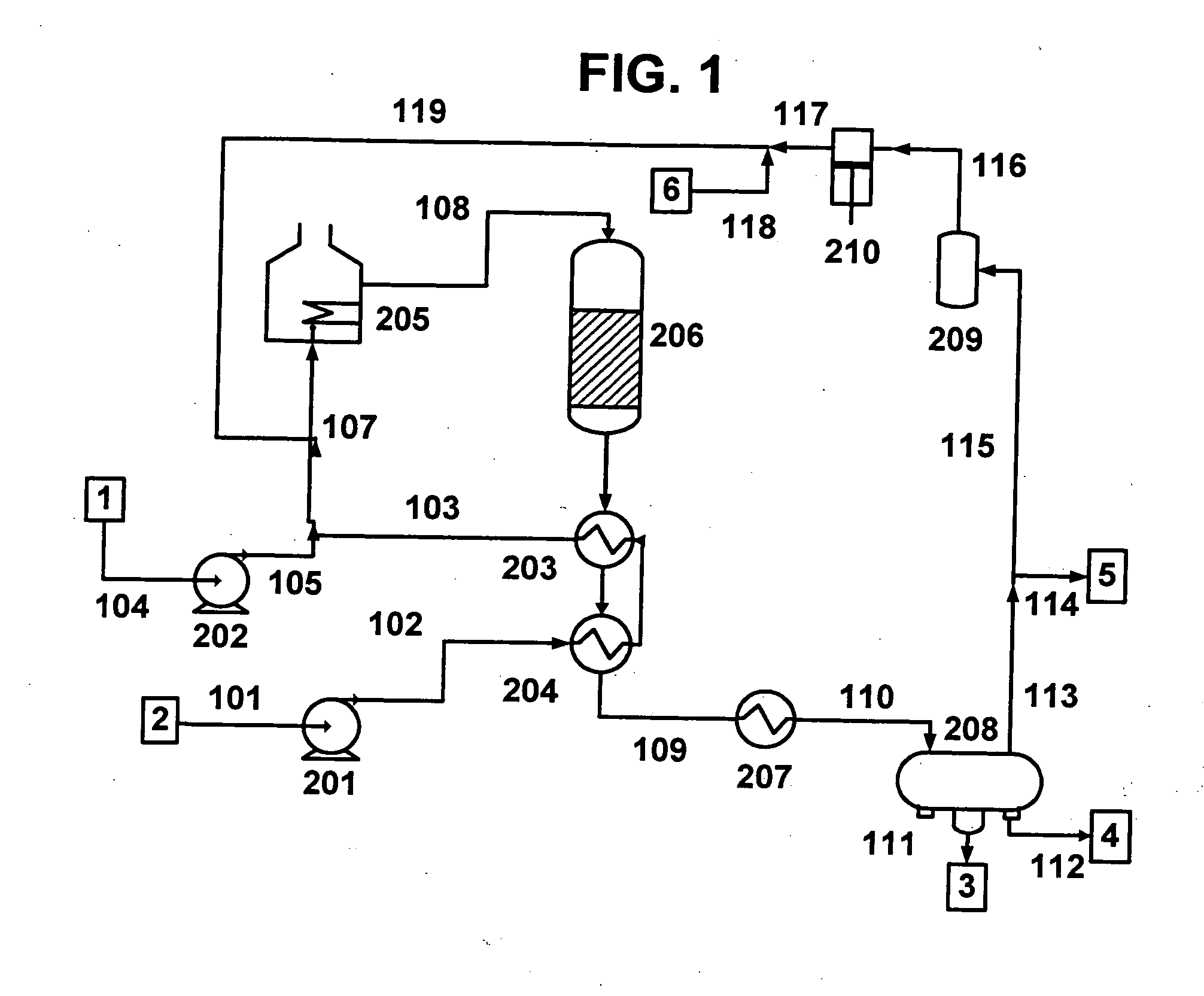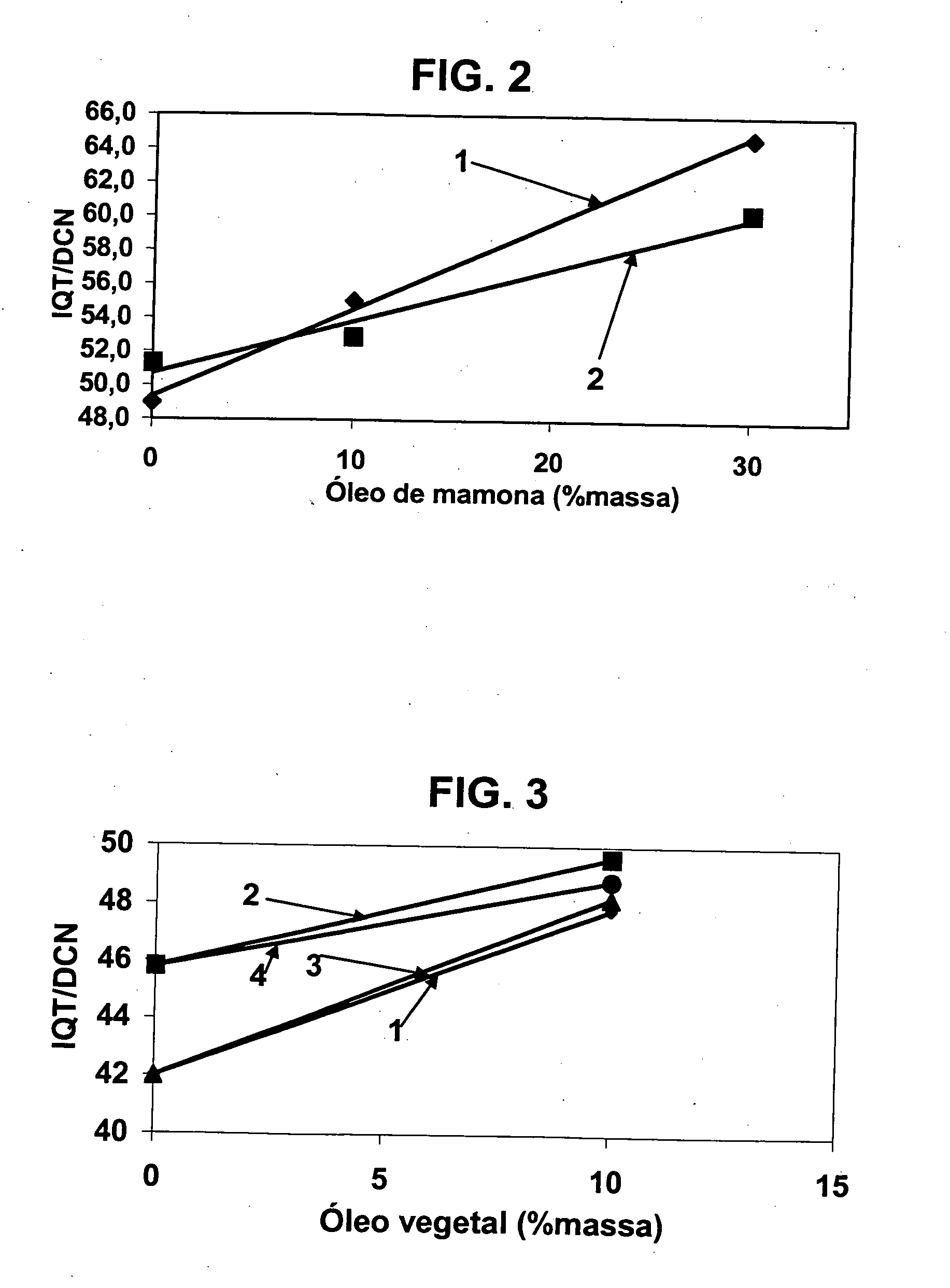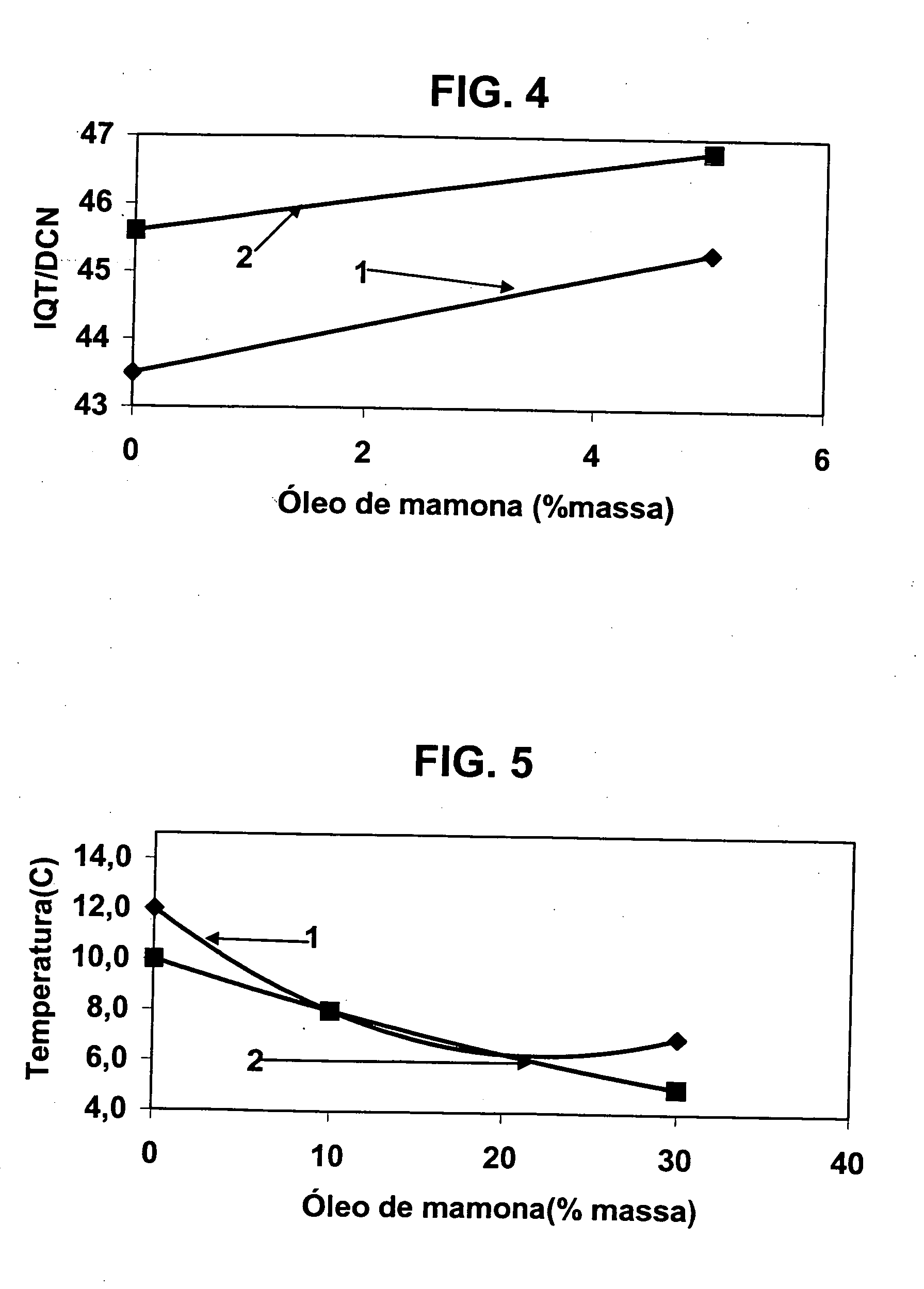Vegetable oil hydroconversion process
a technology of vegetable oil and hydroconversion process, which is applied in the direction of hydrocarbon oil treatment products, physical/chemical process catalysts, metal/metal-oxide/metal-hydroxide catalysts, etc., can solve the problems of not being able to implement a similar program for diesel, and the conventional engine is not suitable for using this fuel. , to achieve the effect of improving the cetane index and the cetane index
- Summary
- Abstract
- Description
- Claims
- Application Information
AI Technical Summary
Benefits of technology
Problems solved by technology
Method used
Image
Examples
Embodiment Construction
[0034] The coprocessing of vegetable oils mixed with mineral oil, in existing HDT units, is an alternative for incorporating a low added value flow to the refinery's diesel pool, not only for having a high cetane number but also for reducing the density, as normal paraffins have low density and the HDT process has limitations for attaining this specification with very aromatic loads (high LCO content).
[0035] Another important factor is the use of castor oil, which unlike other vegetable oils hydrocracks, producing C10 and C11 paraffins as well as C17 and C18 paraffins, therefore having lower density than other vegetable oils studied.
[0036] Another important factor is, that diluted with vegetable oil (VO) the industrial unit can operate at temperature ranges below 340° C., which is lower than the temperatures shown by process patents with pure VO.
[0037] Also highlighted is the improved plugging point for diesel oils used in Brazil, which is contrary to the results in existing pate...
PUM
| Property | Measurement | Unit |
|---|---|---|
| Temperature | aaaaa | aaaaa |
| Temperature | aaaaa | aaaaa |
| Fraction | aaaaa | aaaaa |
Abstract
Description
Claims
Application Information
 Login to View More
Login to View More - R&D
- Intellectual Property
- Life Sciences
- Materials
- Tech Scout
- Unparalleled Data Quality
- Higher Quality Content
- 60% Fewer Hallucinations
Browse by: Latest US Patents, China's latest patents, Technical Efficacy Thesaurus, Application Domain, Technology Topic, Popular Technical Reports.
© 2025 PatSnap. All rights reserved.Legal|Privacy policy|Modern Slavery Act Transparency Statement|Sitemap|About US| Contact US: help@patsnap.com



